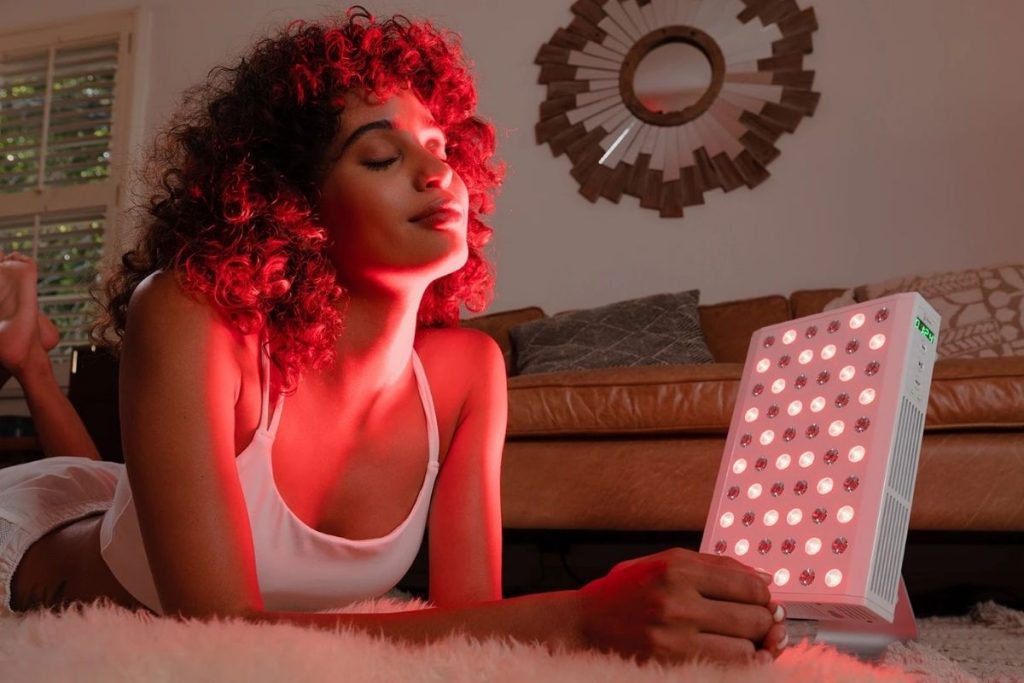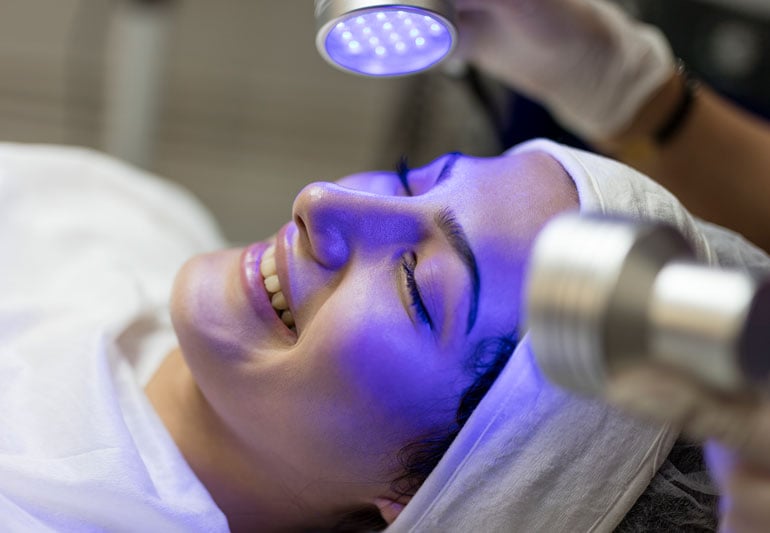LED (light-emitting diode) light therapy is a non-invasive treatment for various skin conditions, such as fine lines from aging, psoriasis, acne, and other overall issues. You can get such light therapy by using LED face masks, infrared devices, near-infrared light wands, etc.
This therapy comes in different types, such as red light and blue light therapy. So, we will talk about them in this article.
Keep reading if you want to learn more about the difference between blue light and red light therapy.
What Is the Difference Between Blue Light and Red Light Therapy?
These two light therapy treatments have different wavelengths; thus, they might affect the skin differently. Red light therapy might be beneficial for the surface level of the skin as it might stimulate collagen and reduce inflammation.
In contrast, blue light therapy might eliminate bacteria on the skin and penetrate the pores. Most people use red light therapy for anti-aging purposes, while blue is primarily used for treating acne.
These two light therapy treatments may be used together as they complement each other. When using combined red light and blue light therapy, you might see improvement in the following conditions:
- Inflammation
- Rosacea
- Eczema
- Scarring
- Psoriasis
- Acne
- Dermatitis
- Wound healing
- Spots and wrinkles
About Red Light Therapy
Red light therapy, also known as LLLT or near-infrared light therapy, might aim to improve your skin’s appearance via low-wavelength red light. It might help target skin conditions and concerns such as scars, wrinkles, acne, and redness. It might also be known to be beneficial for other medical conditions.
You can read a lot about this type of therapy on the Internet, as it is becoming quite popular in recent years due to its non-invasive procedure.
There is still a lot of ongoing research concerning red light therapy, and a small number of studies have been published about it. The studies’ results seem promising, but the therapy’s effectiveness is yet to be determined.

Source: asweatlife.com
You Might Be Interested: Are All Red Light Therapy the Same?
How does it work?
While doing red light therapy, your skin gets exposed to a red light. Your cells, specifically the mitochondria, soak up this light and might produce more energy. These cells are also called power generators.
Many experts believe that red light therapy might aid cells in repairing themselves and becoming healthier. This, in turn, might promote skin and muscle tissue healing.
Red light therapy is a non-invasive procedure. It doesn’t put you at any risk as it uses very low levels of heat that may not damage your skin. It is not the same type of light that tanning booths use, as it doesn’t emit UV rays.
Red light therapy is done at a clinic or your doctor’s office. This treatment exposes your skin to a lamp, laser, or device with a red light while you wear protective goggles on your eyes. The treatment usually lasts around 20 minutes.
You may feel a bit of heat during the process, but definitely no discomfort. The recommended time for treatment is two to three sessions per week.
| Benefits of red light therapy |
| May stimulate collagen production |
| May increase fibroblast production |
| May reduce inflammation in cells |
| May increase blood circulation to the tissue |
| May improve acne, heal wounds, reduce stretch marks, wrinkles, age spots, and fine lines, improve facial texture, and improve eczema, treat rosacea, and psoriasis |
About Blue Light Therapy
Blue light therapy is a treatment for skin conditions that are on the skin or under it. It is a pain-free procedure, which is why people opt for it.
This type of therapy becomes photodynamic when it’s used along with photosynthesizing drugs, and they’re activated through a high-intensity light source.
The light used for this procedure can be either a natural violet or blue light, which is a safe alternative treatment. This also partially answers the question of the difference between blue light and red light therapy, as blue light therapy can become photodynamic.
Blue light therapy might treat areas only light can reach. Thus, it is most commonly used to treat skin conditions or underneath.

Source: health.clevelandclinic.org
How does it work?
Blue light therapy treatment is a quick procedure, and it’s always done as an ambulatory one. However, this might not be the case if it is photodynamic therapy, as it will be used in high-risk areas where cancer is present.
While at a clinic, your practitioner will escort you to a darkened room. If any photosynthesizing drugs are being used, the medication gets applied topically to the area that’s undergoing treatment.
If these photosynthesizing drugs are being used, they may need to rest on the skin for around a few hours and up to a couple of days to get fully absorbed into the skin. You shouldn’t stay in the sun or under any other bright light for this period.
When the treatment is administered, your doctor will provide you with a pair of goggles for eye protection, and then they will apply blue light to the target area.
Blue light therapy sessions last anywhere from 15 to 90 minutes, depending on what area is being treated, how big the area is, and whether a topical medication is applied. It takes 17 minutes for a small area.
| Benefits of Blue Light Therapy |
| May treat sun damage |
| May prevent skin cancer |
| May remove precancerous skin lesions and cancerous skin lesions |
| May improve skin texture |
| May reduce enlarged oil glands |
| May reduce sebaceous hyperplasia |
| May remove sun spots, acne, and acne scars |
| May improve depression |
Conclusion
We hope you have got enough information about the difference between blue light and red light therapy, as well as help you learn a few more things regarding these two LED light treatments.
As you’ve read, they might be very beneficial for skin conditions and concerns and don’t pose any risks to your health as the procedure for them is non-invasive.
If you consider trying these two treatments, consult with your doctor to see what would be best for you.

Hello! I’m Nicky Rodgers.
Almost a decade ago, I got excited about the idea of employing alternative methods like red light therapy to create a healthier life.
To learn more about it, I did my Certified Light Therapist course from Photonic Therapy Institute and started looking into the intricacies of how light therapy influences several bodily processes. Before I knew it, my interest had become an obsession which resulted in this extensive blog.
Here, I offer countless well-researched articles to help you understand the benefits and uses of light therapy. I hope this information gives you a head start in your wellness journey.
